Steven Universe: Save the Light
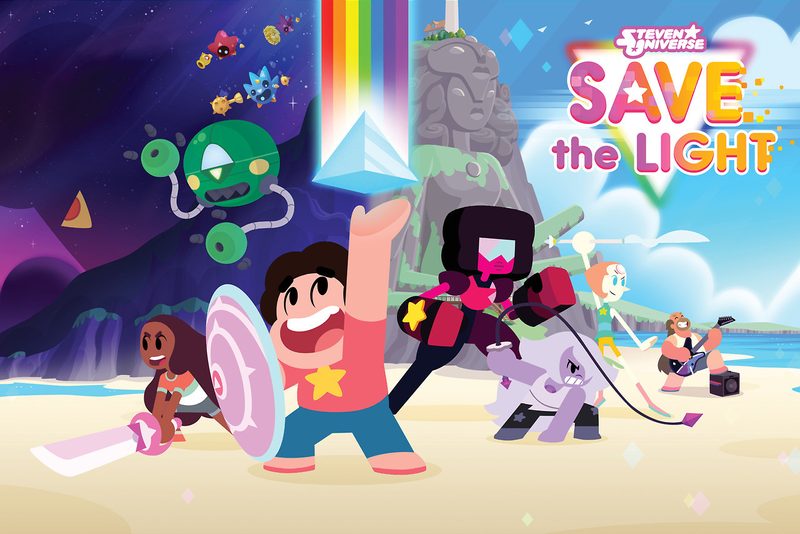
Grumpyface Studios, the creators of well-received iOS games such as Steven Universe: Attack the Light and Teeny Titans, bring a valuable design sensibility to video games. Typically I find mobile games to be poorly designed for the platform. In addition, games built for a particular media property, or “branded” games, force developers to unreasonable delivery standards, compromising quality. With Steven Universe: Save the Light (hereby abbreviated as StL), Grumpyface brings their commitment to clean game design and investment in understanding the subject matter to the table. Unfortunately, critical and showstopping bugs deeply harm what is otherwise an exemplary effort in branded game development.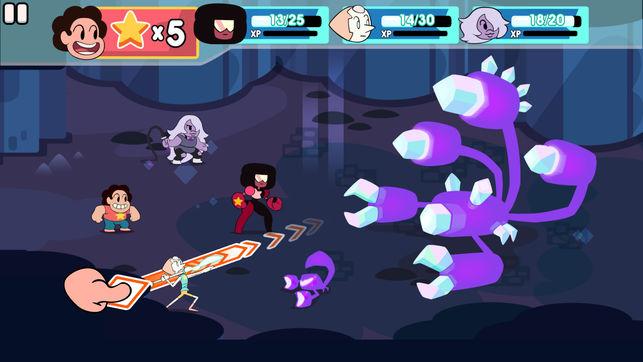
Typical mobile games fail to account for the affordances of platform, with controls more reminicient of platforms where a cross-pad/thumbstick controller is the standard. Customarily these games use the touch screen to emulate such an interface. In some cases, such as a port of an older game, this is a necessary evil, though it would behoove developers to support external controllers in such cases. With Steven Universe: Attack the Light (hereafter AtL), Grumpyface decided instead to build their world as nodes in a map, where each node was roughly the size of an iPhone screen. The player swipes from screen to screen, as opposed to using a control interface to move the protagonist around the map. While there are a handful of exceptions, this interface indicates deep understanding of the affordances of a device where touch is the primary control interface. Other interface elements, such as choosing commands, are easily tappable. The player can add extra damage by timing a tap to an on-screen indicator. While this design has been used in the past, here it functions seamlessly with the interface affordances, as the touch screen as a whole can function as one giant, easy-to-hit button. Infinite runner games like Super Mario Run leverage this concept as well, eschewing fine control on a touch screen for something that can easily be done while waiting in line at the drugstore.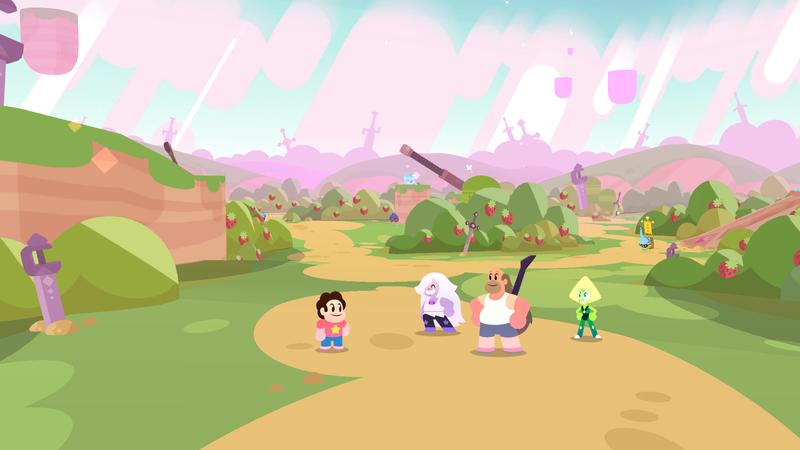
Grumpyface clearly works very closely with their clients to understand and collaborate on the design and story of their games. I have typically found most game studios seem to be hamstrung by various restrictions: access to the creative staff, budget limitations, and development time constraints brought on by the need to launch to coencide with the release of another product, such as a movie premiere. By contrast with AtL, the overall design comes from a direction set in the show the game is based upon. The characters use the simplified design (broader details, simpler lines) the show utilizes when their characters are far away from the “camera” in a scene. Not only does this decision dovetail nicely with the show, it gives the game its own strong visual identity. Sonically, the game takes inspiration from some of the chiptune melodies featured in the show as well, which fits in nicely with the game genre as a whole.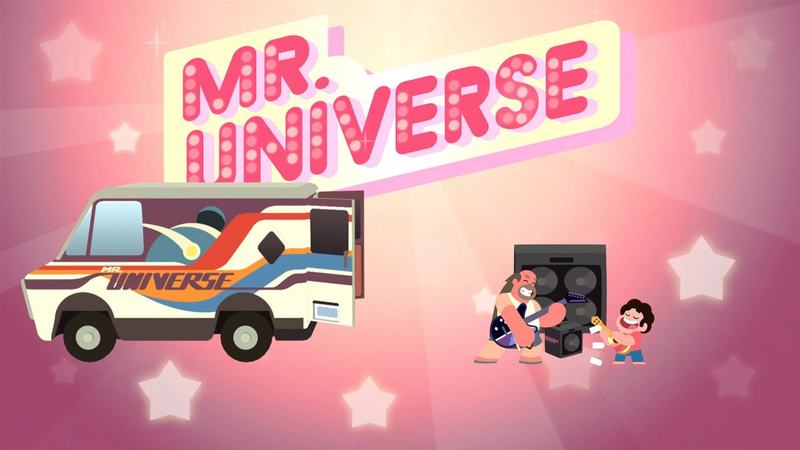
This visual identity comes along for the ride in Save the Light (StL), the sequel to AtL for the more traditional PS4, Xbox One, Nintendo Switch, and PC platforms. The design of characters remains the same, as does much of the music. The transition to a game console such as the PS4 allows Grumpyface to expand the scope of their ambitions that were first laid out in Attack the Light. The visuals impress more, the story gets longer, more characters from the show make an appearence, and gameplay extends further. While taking its cue from AtL, StL shares a bit more with traditional RPGs on consoles, such as Super Mario RPG or Paper Mario, which makes sense given the platform. Grumpyface takes the opportunity to add their own little flourishes that add to the experience of the game and its source material in an engaging way. For example, both Steven and his dad, Greg Universe, function like “bard” characters in a typical RPG, offering healing and stat enhancement via muscial instruments. Steven wields a ukulele while Greg rocks out with his electric guitar. What stands out is not only the incorporation of the characters’ musical talents, but the integration of a new musical instrument into the battle and boss themes. While not quite taking full advantage of the ability to dynamically mix music live as in games like Metal Gear Solid 2, this addition reflects the thought put into the game’s design and understanding of the source material. Much of this may have come from the series’ creator, Rebecca Sugar, but Grumpyface’s close collaboration with her shines in the final product.
Other small details abound. When paused, the music becomes a muted version of the currently playing track, as though it’s coming from a TV in another room. Gem character pairwise fusions featured thus far in the show function as team attacks. Much like Simpsons: Hit and Run before it, the inhabitants of the town show up as fun quest-givers, vendors, or just to fill out the town. In an inspired move, Steven/the player gets to name most of the bosses the party encounters.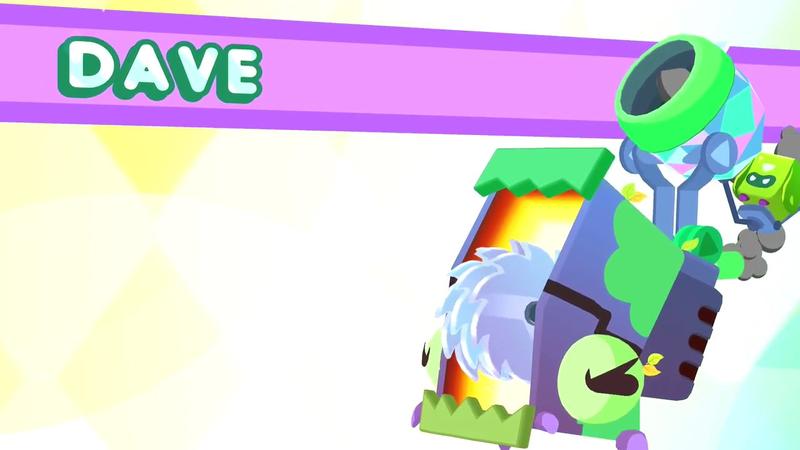
All of this detail, design, and dedication to the source material is hampered by a poor engineering effort. To be fair to the developer, the PS4 and Xbox One are new platforms for them. They seem to have partnered with another developer for each of their PC and Switch versions. While the PS4 version has matured well from its initial version, the Switch verison still needs a number of fixes for game-breaking bugs. An issue that affects all versions, though, are long loading times between areas that could stand to be signficantly improved.
I’ve really been impressed with the work of Grumpyface overall. They’ve shown that, as a developer, they have strong process in working with the property and its owners to create a great experience and a successful adaptation. Unfortunately, outside their core platform of iOS, they’ve faltered somewhat in bringing their efforts to other platforms. I hope they continue to develop such great games and perhaps get a shot at other great properties, like Adventure Time. But I’d also like to see them collaborate with more experienced developers or development houses on platforms with which they are less familiar, to ensure that their execution meets both their vision and prior success.